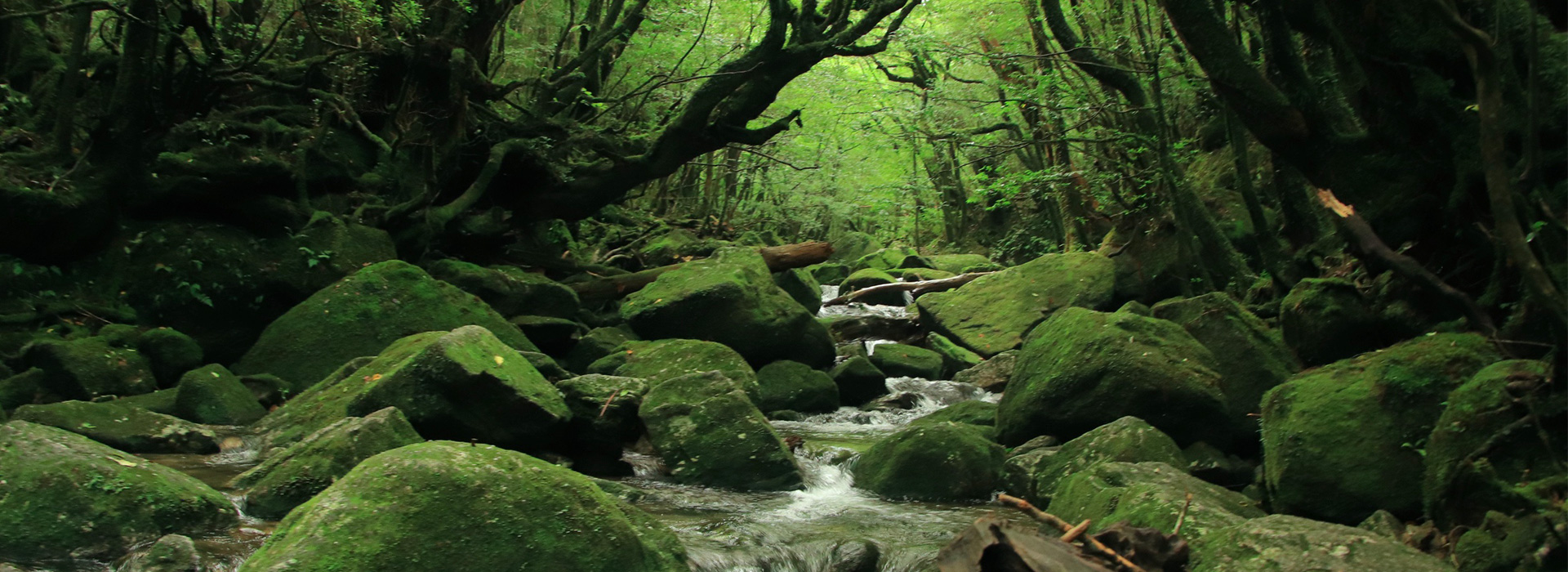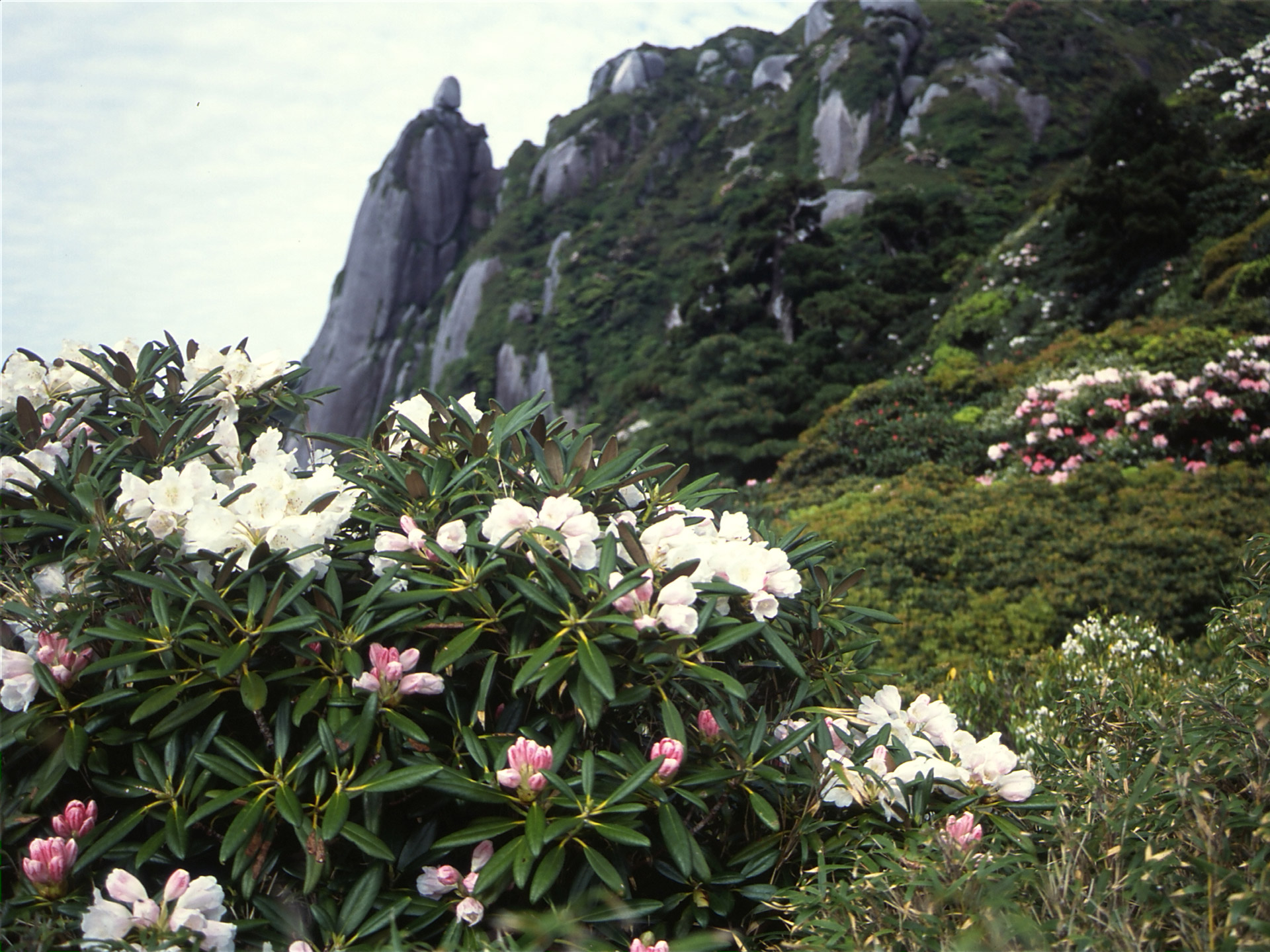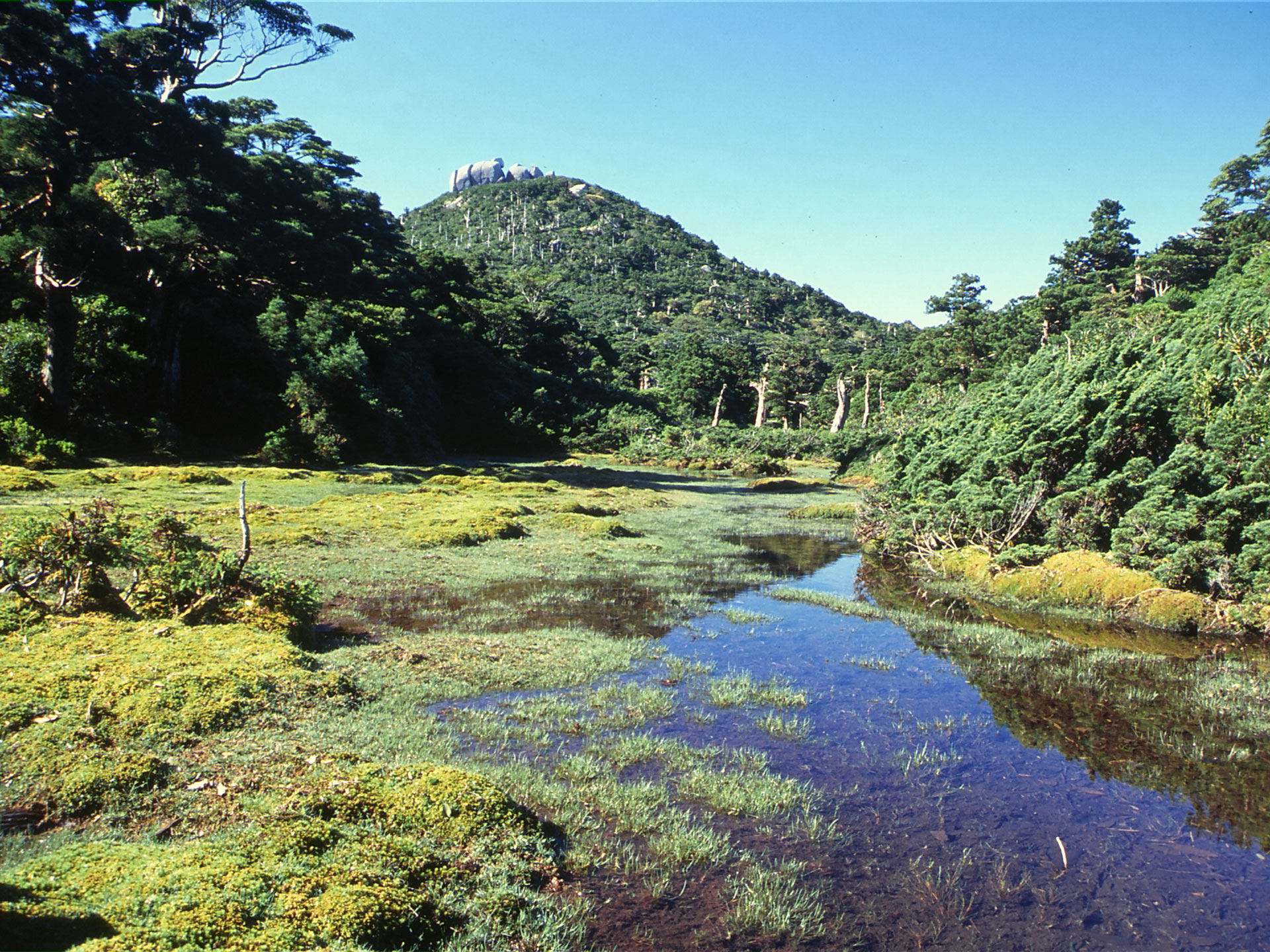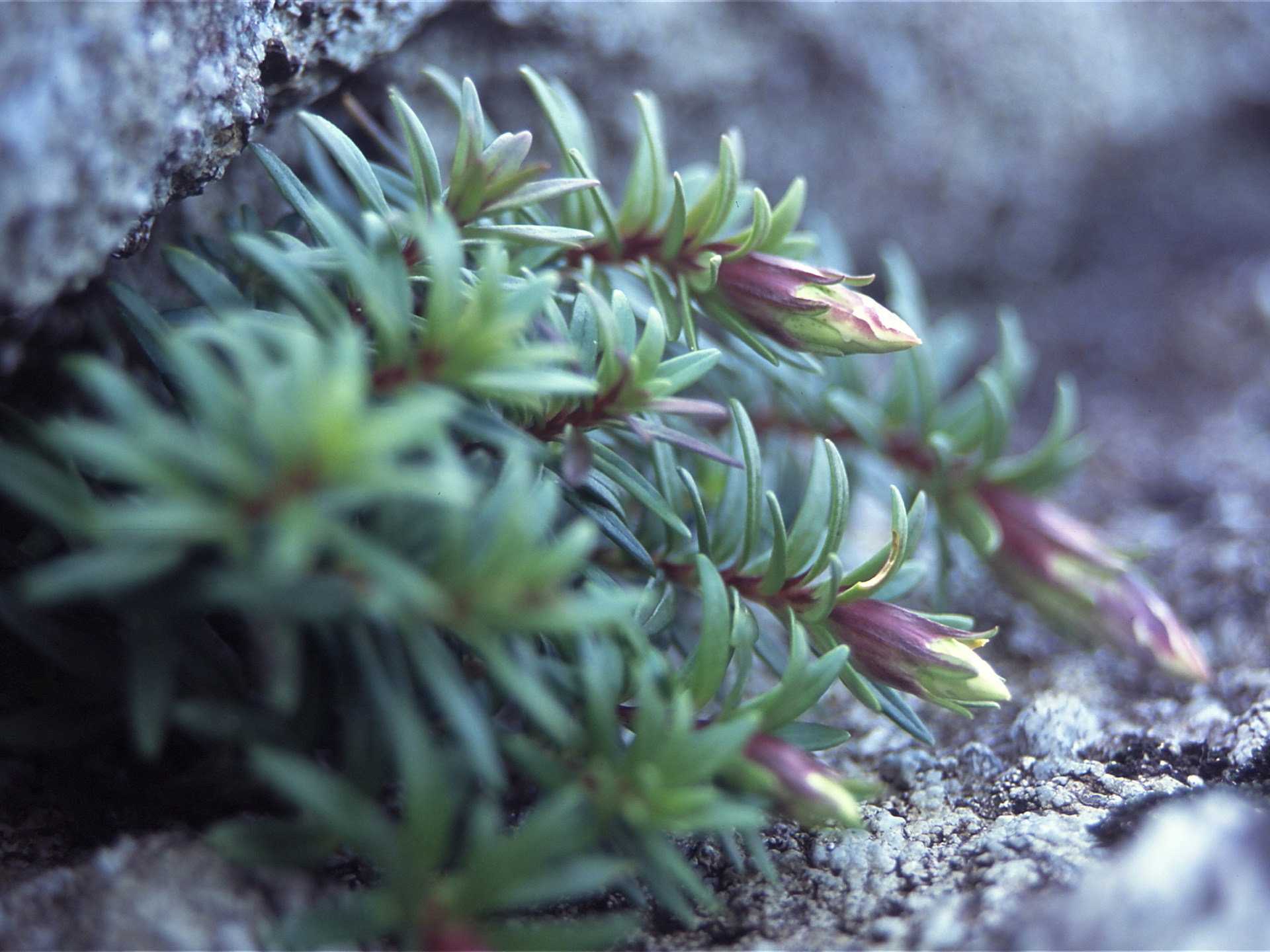Rosokuiwa(Candle Rock) and Rhododendron yakushimanum
Rosokuiwa on the west side of Mt. Nagata-dake.
It is especially recommended when the Yakushima rhododendrons are in full color!

December 11, 1993 Registered as Japan's first World Natural Heritage site
Approximately 20% of the total area of Yakushima is registered as a Natural Heritage Area.
Although an island located in the south of the Japanese archipelago, Yakushima has a wide range of temperatures due to its chain of mountains over 1,000 m in elevation, and the natural vegetation of Japan as a whole is vertically distributed by elevation.
In 1993, it was registered as Japan's first World Natural Heritage site because of its natural Yakushima cedar forests and the vertical distribution of vegetation.
Yakushima, also known as "Water Island," receives so much precipitation that its "water" plays an important role in maintaining the island's unique ecosystem and landscape.
Although the island is located in the south of the Japanese archipelago, it has a wide range of temperatures due to a series of mountains over 1,000 m high, and many giant cedar trees over 1,000 years old, an endemic plant, grow here, leaving the Yakusugi natural forest and broad-leaved forest in their original state. In 1993, 10,747 ha (about 20% of Yakushima) was registered as Japan's first World Natural Heritage site.

Rosokuiwa on the west side of Mt. Nagata-dake.
It is especially recommended when the Yakushima rhododendrons are in full color!

A high-altitude marsh located at the southernmost tip of Japan.
A rest point for hikers with endemic alpine plants and a clear stream flowing through the marshland.

A summer flower representative of Yakushima.
Endemic to Yakushima.
It grows wild in crevices in the rocks at the top of the mountain and blooms only on sunny days.